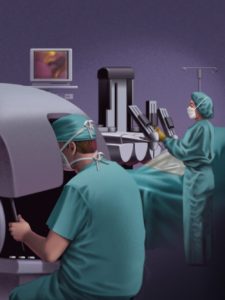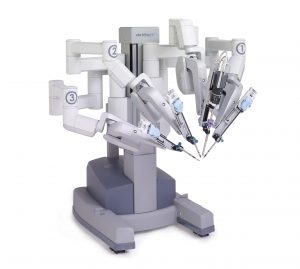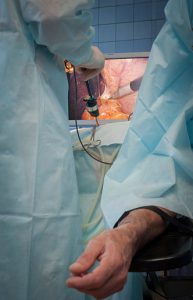 Pelvic organ prolapse (POP) is a type of pelvic floor disorder. It occurs when the muscles and tissues that support a woman’s pelvic organs become weak and no longer capable of holding those organs in place.
Pelvic organ prolapse (POP) is a type of pelvic floor disorder. It occurs when the muscles and tissues that support a woman’s pelvic organs become weak and no longer capable of holding those organs in place.
A woman’s pelvic organs include the rectum, uterus, bladder, cervix, and urethra, all of which are held in place by pelvic floor muscles. However, these muscles can become stretched or torn as a result of childbirth or other factors including:
- Pelvic floor injuries
- Chronic constipation and straining during bowel movements
- Aging
- Obesity
- Hormonal changes
- Hysterectomy
- Genetic disorders that weaken connective tissues
- Having a condition that causes frequent coughing
When pelvic floor muscles are no longer able to hold pelvic organs in position, they drop lower in the pelvis. This creates a bulge or prolapse into the vagina, and in severe cases may cause pelvic organs to bulge onto other organs or outside the body.
According to the American College of Obstetricians and Gynecologists, “POP affects 1 in 4 women in their 40s and 1 in 3 in their 60s. By the time women reach their 80s, POP affects half of all women.” Some may experience symptoms that include:
- Lower back pain
- Pressure of pain during sexual intercourse
- Problems inserting tampons
- A feeling of pressure, fullness or aching in the pelvis
- Incontinence
- Spotting or bleeding of the vagina
- Feeling or seeing a bulge coming out of the vagina
POP is diagnosed by conducting a series of tests that include a pelvic examination. There are various treatments available such as inserting devices called pessaries to support the pelvic organs, pelvic floor therapy, or surgery to support or close the vagina.
Flushing Hospital Medical Center offers a wide variety of treatments for POP, this includes sacrocolpopexy, a surgical procedure that can be performed with the assistance of a surgical robot by our highly trained surgeons.
For more information about robotic surgery or procedures performed by our surgeons, please contact Flushing Hospital’s Department of Surgery at 718-670-3135.
All content of this newsletter is intended for general information purposes only and is not intended or implied to be a substitute for professional medical advice, diagnosis or treatment. Please consult a medical professional before adopting any of the suggestions on this page. You must never disregard professional medical advice or delay seeking medical treatment based upon any content of this newsletter. PROMPTLY CONSULT YOUR PHYSICIAN OR CALL 911 IF YOU BELIEVE YOU HAVE A MEDICAL EMERGENCY.









